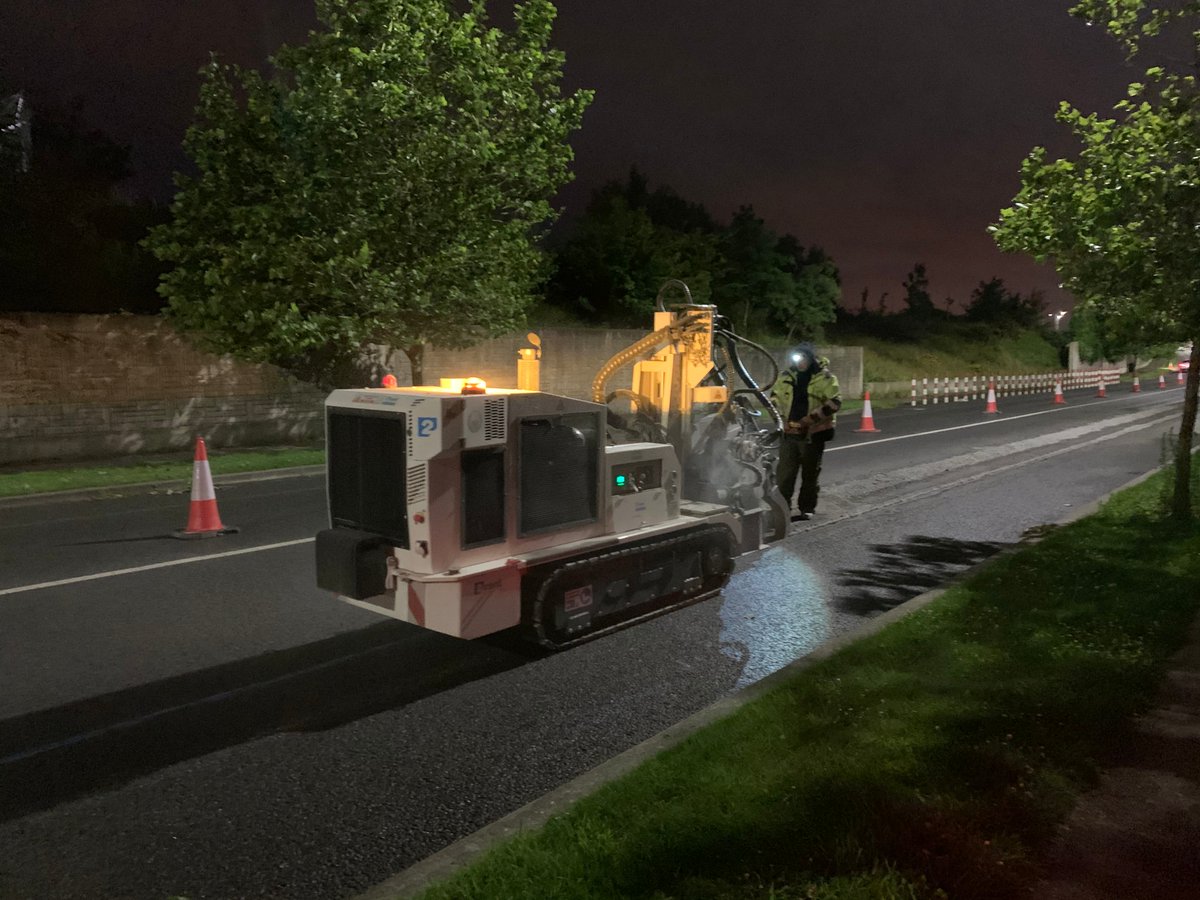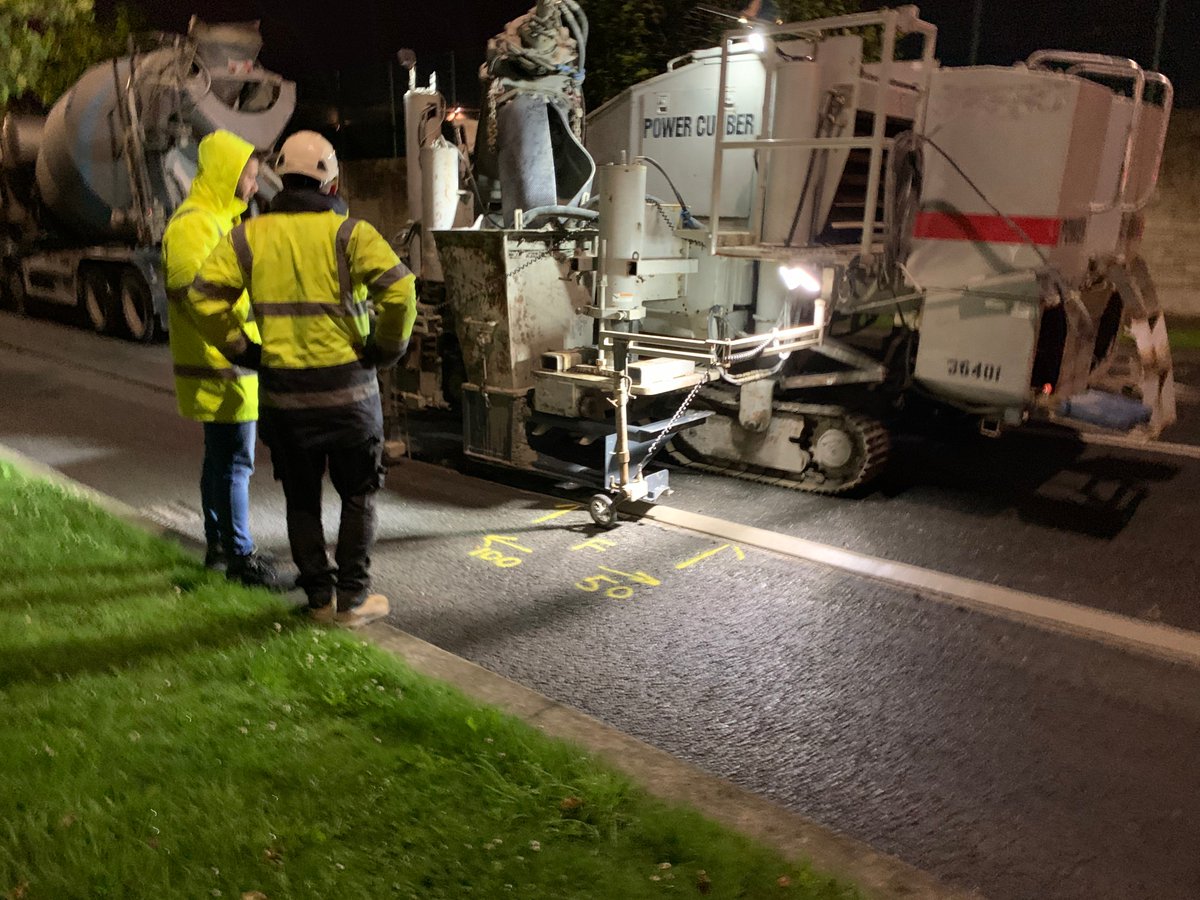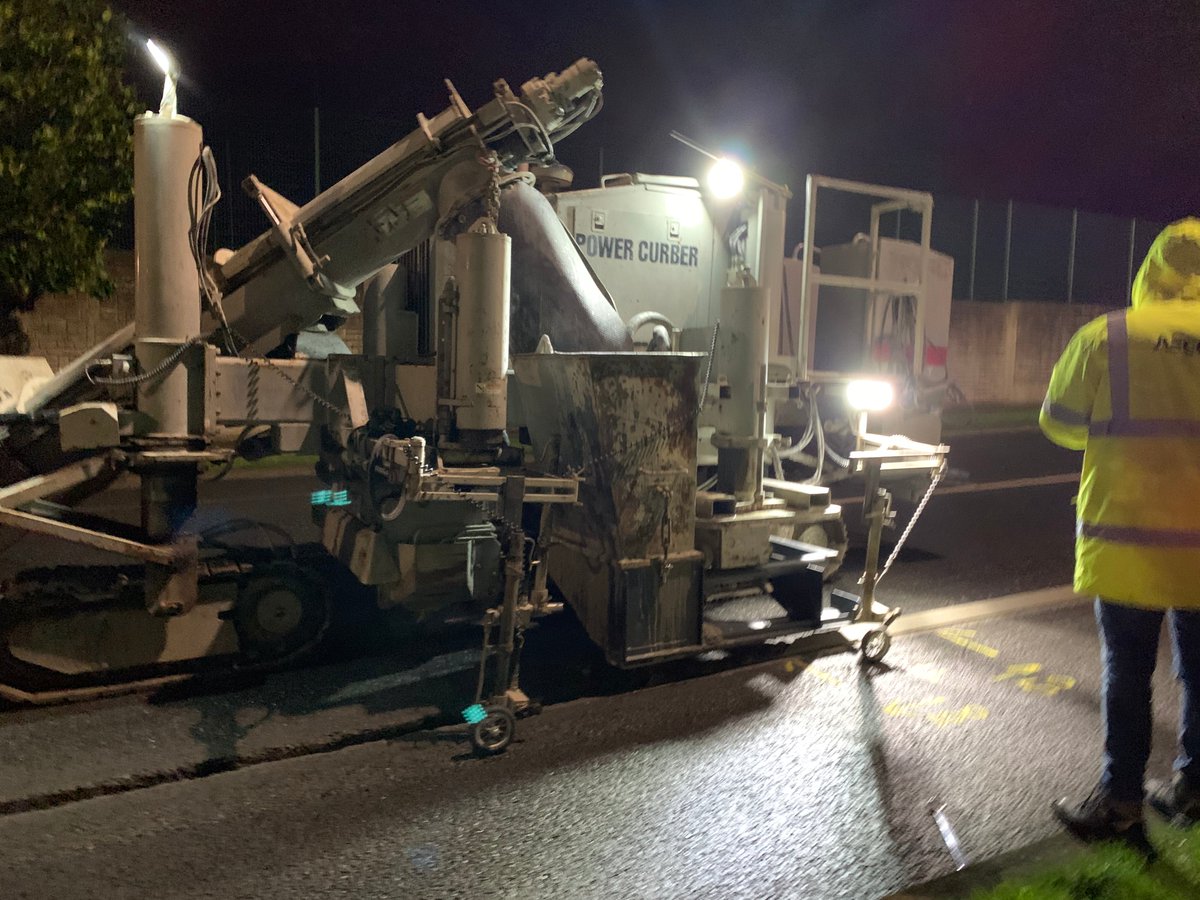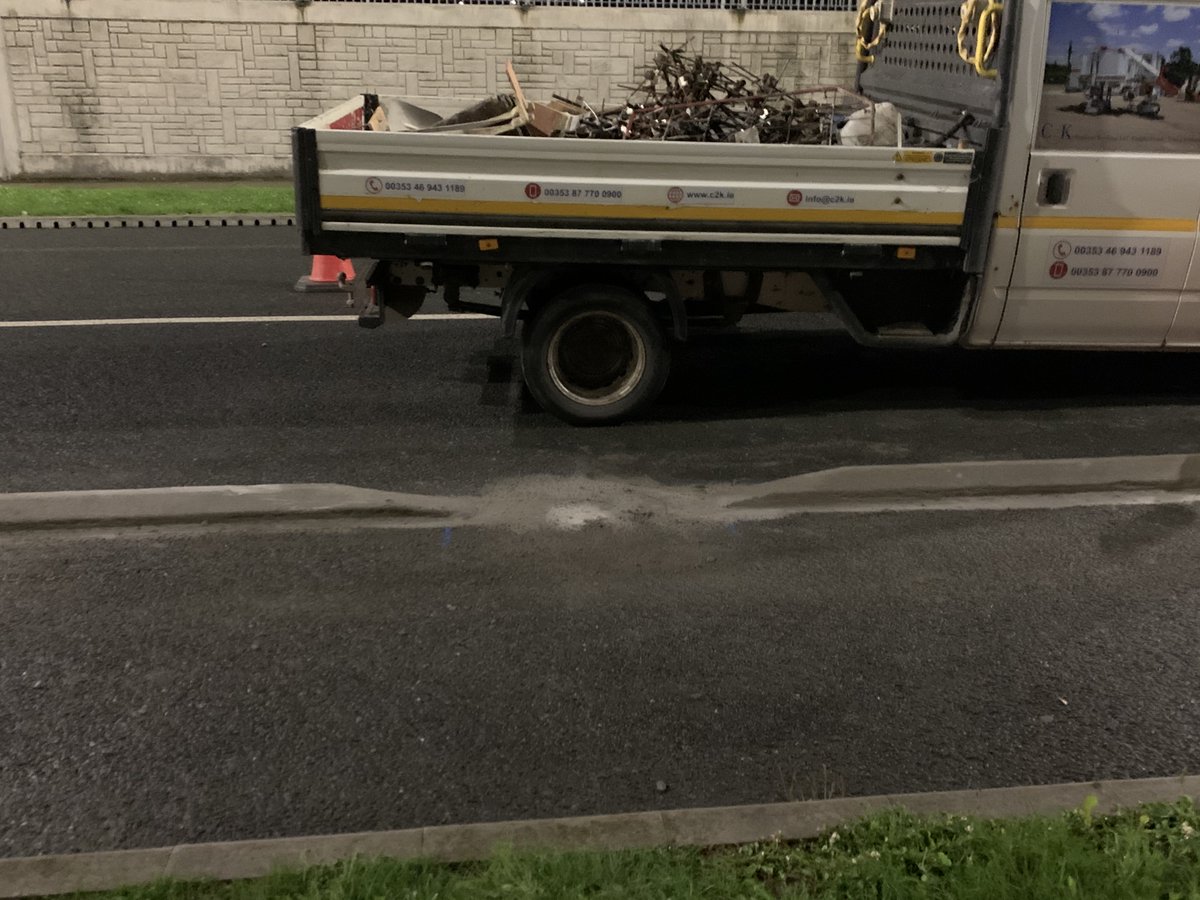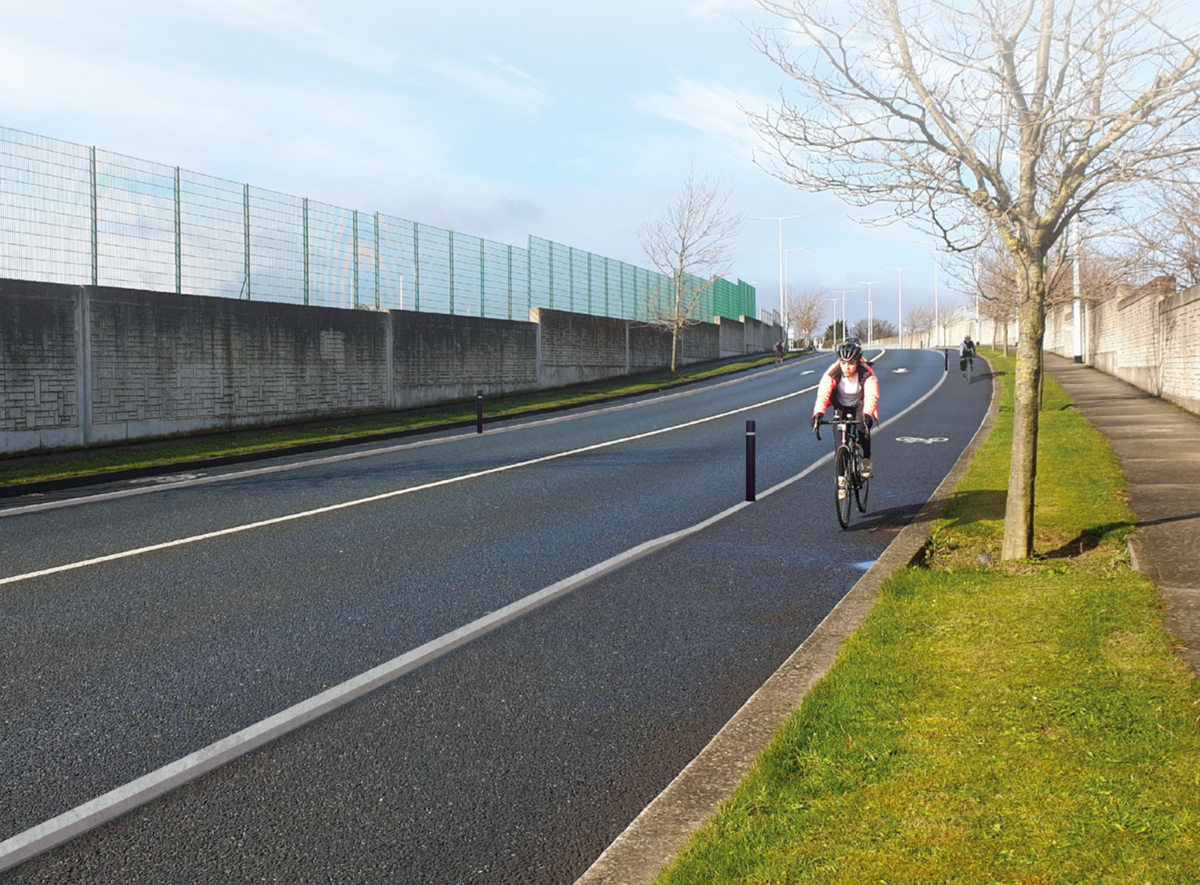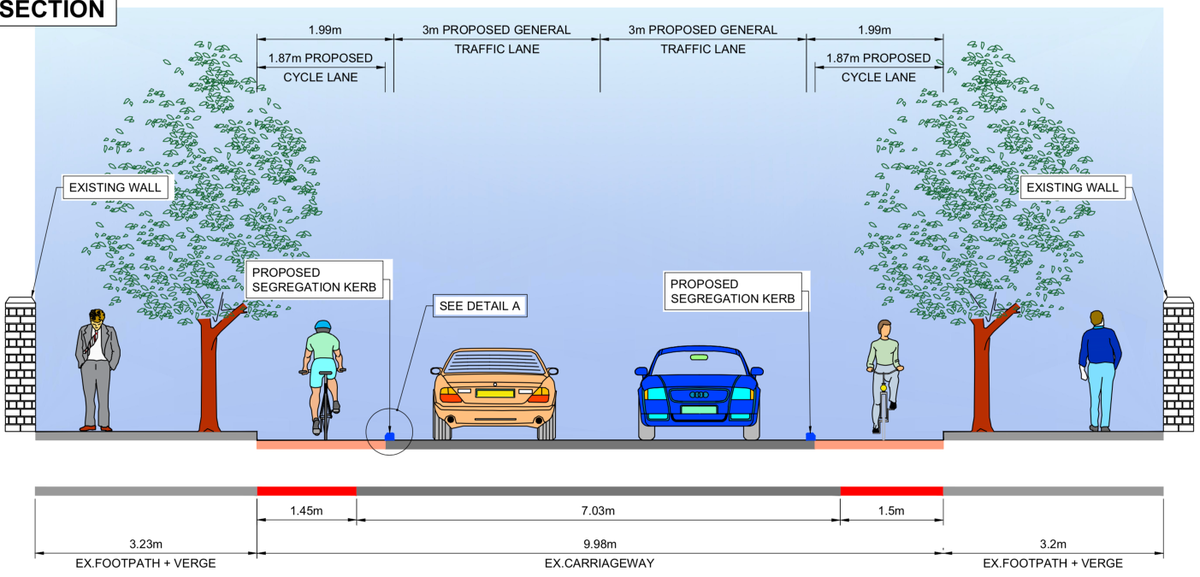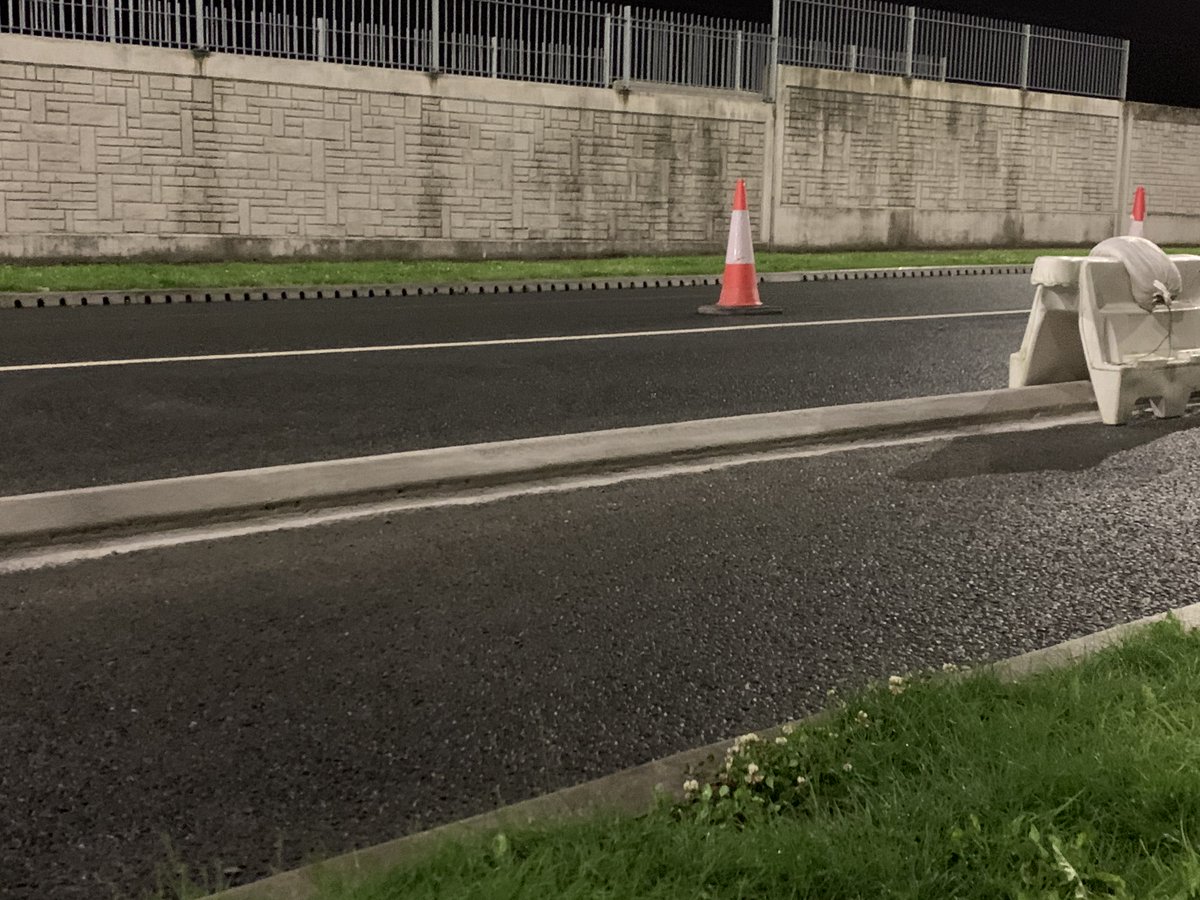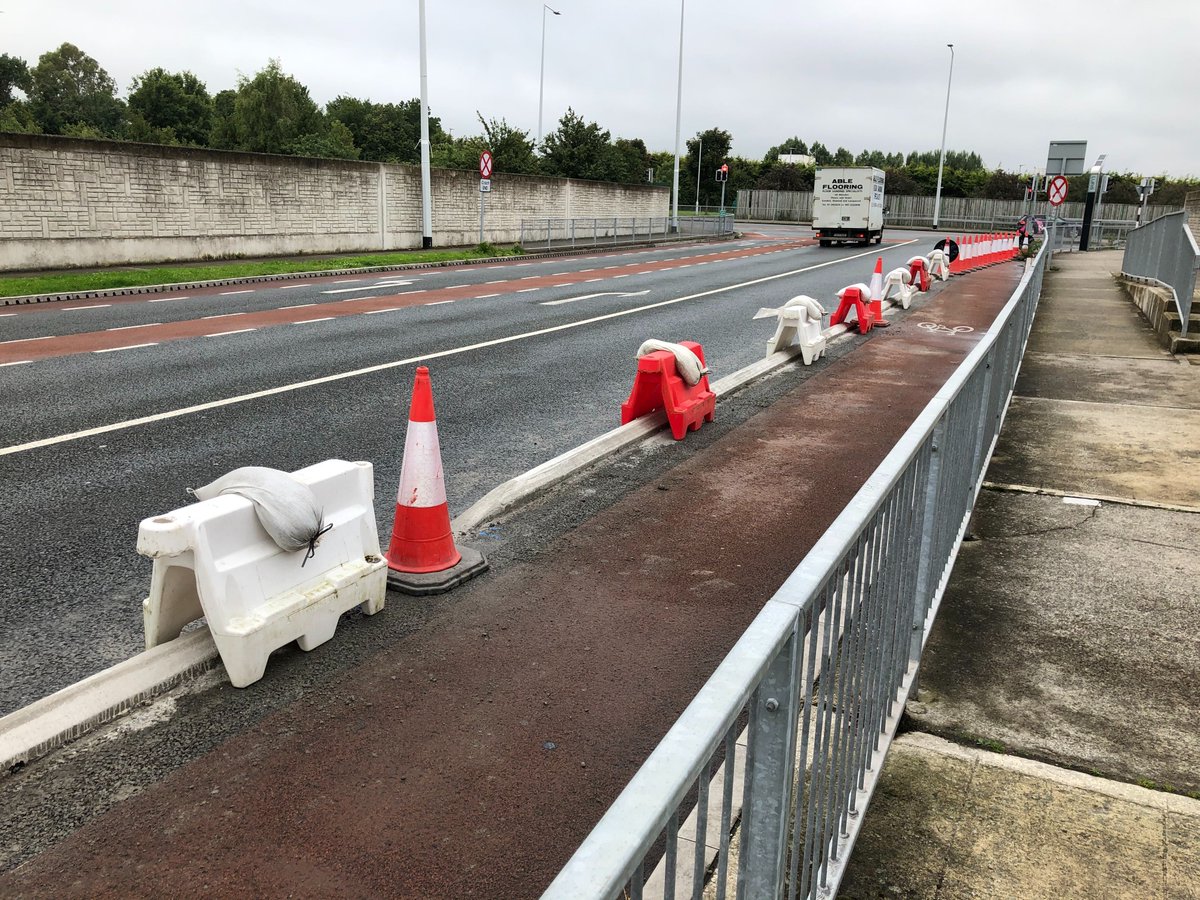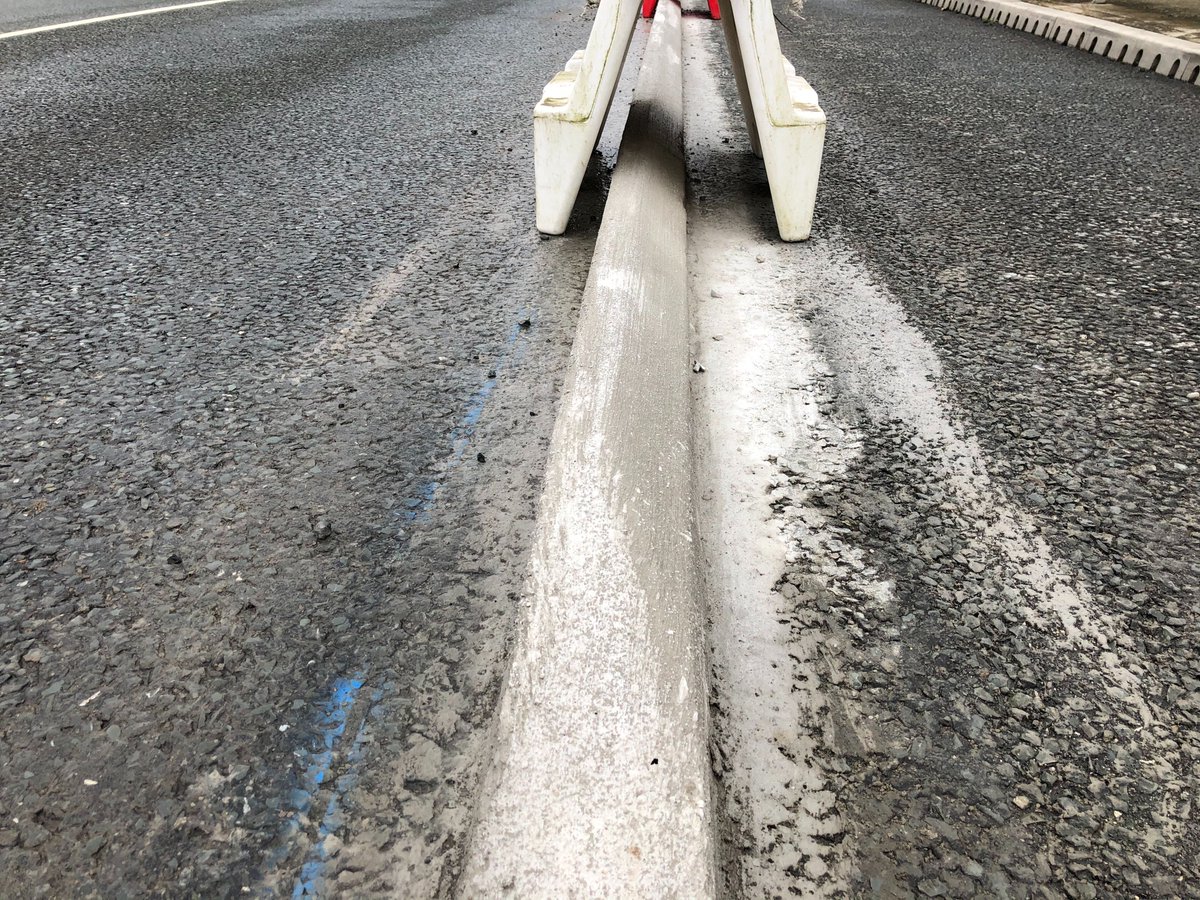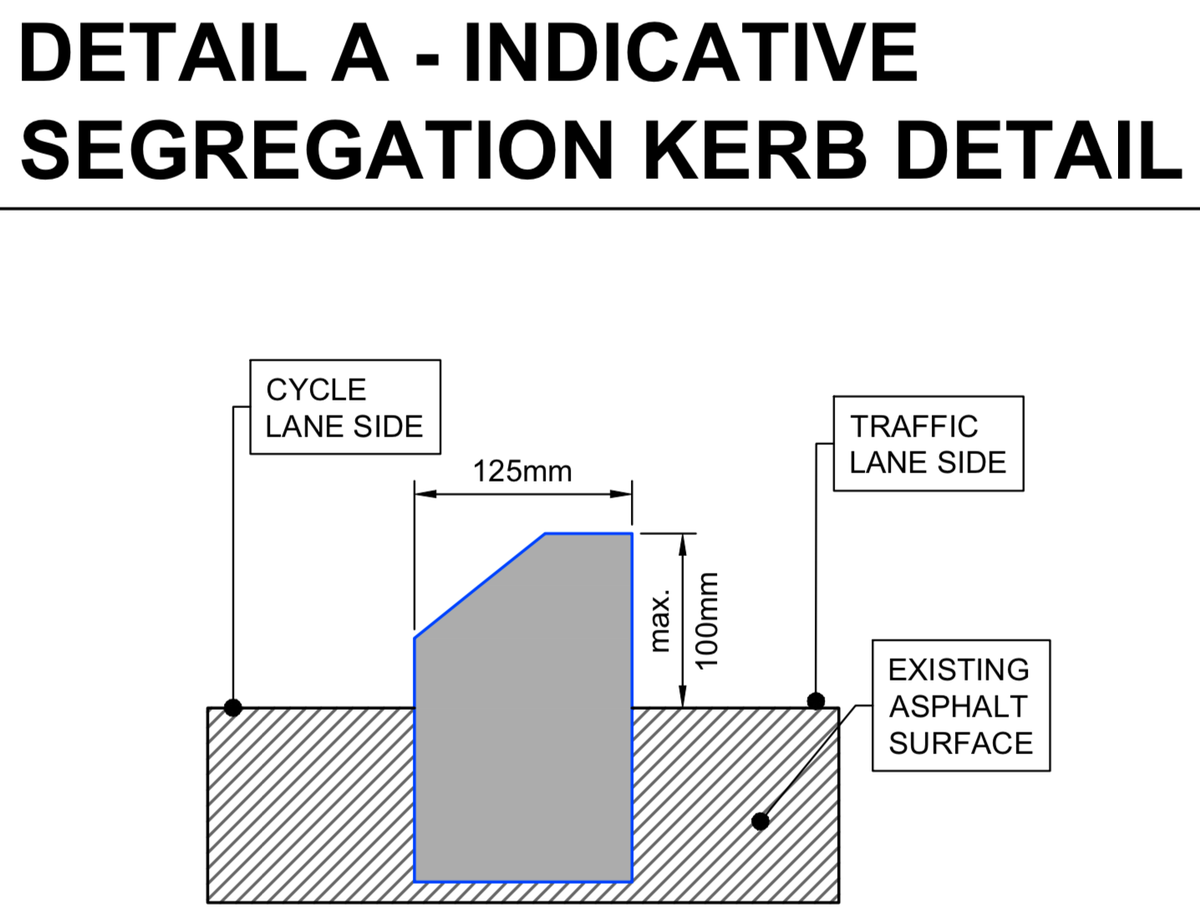This is a nerdy thread about *concrete kerbs* but I promise it will be fascinating.
This new construction technique could quickly see concrete kerbs added to protect cycle lanes overnight. No more plastic bollards.
Traditionally adding concrete kerbs to cycle lanes similar to Benildus Avenue would take 2-3 years.
Engineers would need to redesign the road& #39;s drainage, go to tender and spend 6 months at construction.
Construction here will be completed in less than 2 weeks.
Engineers would need to redesign the road& #39;s drainage, go to tender and spend 6 months at construction.
Construction here will be completed in less than 2 weeks.
It took weeks to plan this trial, but future cycle lanes could see the whole process done in weeks.
Changing the rate of delivery from 2-3 years to 2-3 weeks will mean we can rapidly build out a safe cycling network in Dublin. That& #39;s a lot more happy cycling.
Changing the rate of delivery from 2-3 years to 2-3 weeks will mean we can rapidly build out a safe cycling network in Dublin. That& #39;s a lot more happy cycling.
This is a trial by the National Cycle Design Office that was recently established by the National Transport Authority. @dlrcc are the local partners.
If this trial and one on nearby Goatstown Road are successful, there are plans to roll this technique out across the country.
If this trial and one on nearby Goatstown Road are successful, there are plans to roll this technique out across the country.
Here& #39;s some photos of the two major machines involved in the construction. The first machine digs a trench in the existing road. The second machine pours the concrete curbs into that trench.
A key part of why this can be built so quickly is that the engineers don& #39;t need to make any changes to the road& #39;s drainage. The gaps in the concrete kerbs allow rain water to flow to the existing drains at the side of the road. The gaps will be protected by a single bollard.
This approach cannot be used in all circumstances. Benildus Ave is a wide road with painted cycle lanes. This project doesn& #39;t move any of the existing kerbs on the road. That& #39;s normally the complex part as it requires drainage changes, which requires you to dig up the whole road.
For the concrete kerb nerds out there here you go:
(I know you all exist. Don& #39;t lie to yourself. You& #39;re zooming in on these photos right now)
Photo Credits: J Shanahan
(I know you all exist. Don& #39;t lie to yourself. You& #39;re zooming in on these photos right now)
Photo Credits: J Shanahan
The kerb is 10cm on the motor traffic side. It& #39;s an imposing kerb that most vehicles would not easily be able to mount. On the cycle lane side it is slightly angled so it doesn& #39;t catch a person& #39;s pedals.
I& #39;m honestly so excited about this project. It has huge implications for how quickly councils across the country could start delivering high quality safe and comfortable cycling infrastructure.
Me right now:
Me right now:
There& #39;s more information on Benildus Avenue here: https://trello.com/c/jABHmaEe/128-benildus-avenue-quick-build
and">https://trello.com/c/jABHmaE... the nearby project on Goatstown Road that will start construction soon: https://trello.com/c/jNCB3z7u/129-goatstown-road-quick-build">https://trello.com/c/jNCB3z7...
and">https://trello.com/c/jABHmaE... the nearby project on Goatstown Road that will start construction soon: https://trello.com/c/jNCB3z7u/129-goatstown-road-quick-build">https://trello.com/c/jNCB3z7...
So what do you think?
Are you excited? Do you have questions? Are you wondering if this approach will work on your normal cycling route?
Are you excited? Do you have questions? Are you wondering if this approach will work on your normal cycling route?

 Read on Twitter
Read on Twitter
